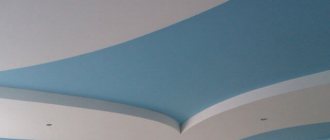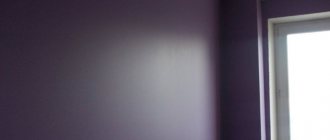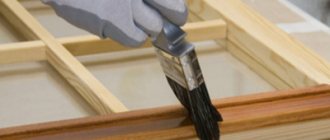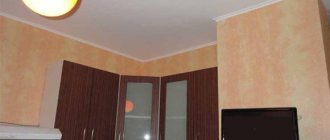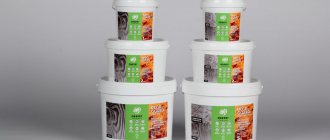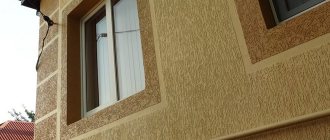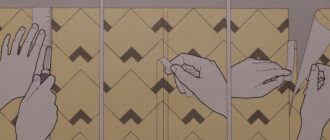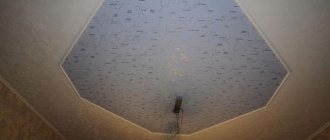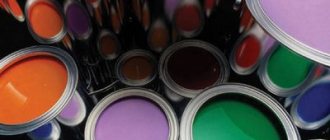Paper wallpaper is the most common wallpaper on the market, which is used for finishing and decorating apartments and houses. Few people know that paper wallpaper is not very durable and often over time begins to look less impressive than after repair. Often people are faced with a choice: do the renovations again, or simply update the existing wallpaper on the walls? Since completely re-painting the entire room takes a long time and is quite expensive, we will talk about whether it is possible to use paint to update paper wallpaper.
Mechanical cleaning of walls
The paper base of the wallpaper inevitably absorbs dirt, dust, volatile substances and odors, especially in the kitchen. Under the influence of sunlight and other factors, the color of the material fades. However, not everyone wants to re-glue them often. How to update paper wallpaper?
To begin with, you can try to clean them mechanically. To do this, it is best to use a washing vacuum cleaner with a special attachment, but a clothes brush or paint brush will also work. The main thing is that the bristles are soft and glide easily over the surface. It is advisable to moisten the walls with a spray, but very sparingly so that stains do not remain.
During processing, it is advisable to rinse and wipe dry the instrument frequently. The deeper the pattern, the more thorough cleaning will be required. After completing the work, you need to walk over the surface with a dry cotton cloth.
Dust settles constantly. Therefore, such cleaning is required at least once a year.
What kind of canvases can be painted?
Tip Not all materials can be painted. Those of them that are already covered with a pattern are usually very fragile, and the coloring pigment will lie unevenly on them, and may soon peel off.
Coatings with special impregnation were invented. They make the canvas stronger, and by partially absorbing the coloring pigment, they securely fix the strip to the surface.
The base can consist of any material, but three types of wallpaper are most often used:
- Paper. A thick layer of cellulose fiber impregnated with a primer. The material is durable and will hide some unevenness in the walls. The rolls are quite cheap and easy to handle.
- Non-woven. Non-woven material is a non-woven material made from small compressed, usually synthetic fibers. The surface of the canvas is additionally treated with foamed vinyl, which gives the material a given texture.
- Glass wallpaper. This is a composite material - an interweaving of glass and paper threads. quite expensive canvas, has many advantages. Glass wallpaper hides wall defects well, is non-flammable, and can serve as an additional moisture and vapor barrier. They can often be found in public places due to their increased wear resistance.
Chemical cleaning methods
Chemicals should only be used on paper wallpaper as a last resort. This is acceptable if no other restoration method works. Aggressive stain removers damage the wallpaper coating and dissolve the paint on it. Such products should not be used in a children's room.
To clean the walls in the kitchen, you need to mix isopropyl alcohol, distilled water and window cleaner in a ratio (1:1:1), spray the drug onto the contaminated areas using a spray bottle and treat with a dry cloth.
If you need to remove ingrained odor, you need to prepare a similar mixture, but reduce the alcohol content by three times. It can be replaced with vinegar. The moistened napkin should be applied to the surface without force and ironed with a warm iron. These steps must be repeated several times. They do not steam it with an iron, but only heat the mixture, then quickly remove the napkin from the wall. The room must be well ventilated during work.
You can experiment with the composition of the cleaner, since the nature of the contaminants varies and it is not always possible to immediately remove old stains. A mixture based on isopropyl alcohol and pure gasoline helps clean greasy areas on the wallpaper from frequent touching with your hands. Sometimes white clay is used. It is applied wet, and after drying, carefully scraped off.
If the proposed methods do not help, experts recommend painting the old wallpaper. This action will help solve several problems at once.
Some painting tips
Ideally, you need to apply paint to paper wallpaper in an even layer. If this is the first time, then it is better to start from the place that will be covered by furniture. Even if a mistake is made, it will be reliably hidden.
If the ceiling is painted before the paper wallpaper, this will prevent drips on the walls. If they dry out, it will be quite difficult to get rid of them.
In most cases, one coat of paint is not enough. Therefore, before applying the second one, you need to make sure that the first one is thoroughly dry. This usually takes at least 4 hours. If after this layer the color of the paper wallpaper is not visible anywhere, then painting can be completed. If spots show through somewhere, you can cover the paper wallpaper with another layer.
To see an example of how to paint paper wallpaper, you can watch the video:
Is it possible to paint paper wallpaper?
There are times when there is no point in doing this type of work. Cheap paper wallpaper is easier to re-stick than to update. If they have a good relief pattern, coloring is quite possible. At the same time, it is very important to follow the technology.
Repair specialists have different opinions about painting paper-based wallpaper. They absorb water from the paint, become wet, become deformed, and even move away from the walls. Therefore, before painting paper wallpaper, preliminary surface treatment is necessary.
Painting process
Before painting the wallpaper, you need to remove the furniture. As an option, cover with construction film. Then the places that need to be protected are sealed with tape: baseboards, trim, sockets, switches.
Sequence of work:
- Dust removal and degreasing of walls.
- Applying primer in 1-2 layers.
- Use a small roller or brush to paint corners, wallpaper near the ceiling (the ceiling is protected with a spatula), above the baseboard, around switches. One wall is being processed.
- The main surface is rolled up with a large roller.
- The remaining walls are painted in the same way.
- The second layer is performed after the first has dried, preferably within a day. The minimum interval between paintings is indicated in the instructions.
It is important to carefully paint the walls without leaving “bald spots” or streaks. A second layer is not always able to eliminate the flaws of the first, and then the wallpaper will have to be re-glued.
What paint to use
The range of these products is extremely wide. Paint for interior finishing work must be quick-drying, resistant to moisture, light and mechanical stress. It is also important that it is as safe as possible for health.
All paints are divided into alkyd and water-dispersion.
Alkyd forms a protective film on the surface of the wallpaper, which allows you to wash the walls with any means. It is a fire hazard and contains toxic oils and resins. Therefore, it is not suitable for residential premises.
The best option for painting paper wallpaper is water-dispersion paint. It does not emit toxic substances or strong odors either during painting or after drying, so it is suitable even for children's rooms. It dries quickly - within an hour. In addition, it allows air to pass through well, so fungus does not form under it.
There are three types of water-based paint. These are latex, adhesive and acrylic. What paint can be used to paint paper wallpaper?
Adhesive is the cheapest, allows you to save money, but is not suitable for wet cleaning.
Acrylic paint is the most expensive, but its use for wallpaper can be ineffective. The fact is that sometimes it is necessary to apply several layers to obtain the desired color.
Of the listed types of paints, latex is best suited. It adheres well to figured wallpaper, protects the paper from getting wet, prevents peeling from the walls, is almost resistant to fading, and has a glossy surface, although it wears off faster than acrylic.
Selecting KM for each type of wallpaper
Craftsmen advise treating KM wallpaper without paint no more than 1-2 times. The composition of the dye is selected based on the type of wall finishing material:
- for non-woven coverings - a water-based acrylic composition is recommended;
- paint for paper wallpaper - latex CM has an advantage;
They are in demand due to their affordable price. They contain low-cost solvents, which makes them inexpensive.
Important: oil-based dyes slide off vinyl because they do not penetrate deep into such wall coverings. Therefore, they cannot be used categorically.
- A water-based emulsion is applied to the vinyl. If you purchase a basic white color, you can add a pigment of the desired color to the paint, which allows you to create an original interior. Using special acrylic compounds, patterns are applied to vinyl wallpaper using stencils. But if you want to show your imagination, then it is better to do it on vinyl wallpaper, which is intended for painting. Then it will be pleasure, not torment;
Advice: not only the aesthetic wishes of the owners are taken into account when choosing a room, but the purpose of the room also plays a role, its size, and the degree of illumination from a natural source. For example, in a large room, matte paint is applied; gloss or semi-gloss coating will visually enlarge a small room.
Any type of dye is chosen a tone darker than the finishing material on the wall, so that the shade of the rolled material is covered.
- If you still decide to paint paper wallpaper, then acrylic paints, water-based emulsion, latex, and alkyd-based CM are recommended.
Is it possible to paint paper wallpaper with water-based paint?
It is quite suitable for restoring old wall decoration. When the water contained in the paint evaporates, it dries, forming a polymer layer that will not allow moisture to pass through in the future. You can even wash such walls. Of course, water-based paint is less moisture resistant than water-dispersion paint. However, it has the advantage of a low price.
In addition, it is absolutely environmentally friendly and fireproof, and is easy to apply. The choice of its shades is extremely wide. When applying it to the walls, you can immediately get the desired color.
Pros and cons of painting wallpaper
An objective analysis of all the positive and negative aspects of the process of applying paint to wall decor allows you to accept or reject the decision of this method of interior renovation.
- Almost all compositions can be tinted; it is possible to choose the desired shade for decoration. Colored CMs are selected to suit any style.
- The paint layer is not afraid of wet cleaning, so it is easy to keep the surface clean.
- Small stains in the form of stains or children's drawings can be easily removed by painting over these areas on the wall. A fragment of the required wallpaper is not selected or the entire wall is not re-glued.
- Painting as a technological process is much simpler than wallpapering.
- Various wall configurations (arches, corners) in a room are easy to paint.
- The work will be done perfectly if the surface has been well prepared.
- The result largely depends on the correctly selected paint and tools for painting work.
- KM for wallpaper does not repel dust well.
- On the surface of the wallpaper, the dye is a protective layer from minor mechanical damage, but a powerful blow breaks its integrity, which will be difficult to restore.
How to paint wallpaper yourself
Stages of painting walls in the kitchen
Using paints and varnishes for painting wallpaper
Characteristics of magnetic paint: types and how to make it yourself
How to paint a suspended ceiling yourself
Preparing for coloring
First, you should clear the room of unnecessary objects: remove chairs, tables, bedside tables, and cover all large furniture with film to prevent paint splashes. It is advisable to cover the floor with newspapers. Skirting boards and sockets need to be covered with masking tape.
The walls must be cleaned of dust with a cloth or using a vacuum cleaner, without turning it on at full power.
The edges of the wallpaper that have moved away from the surface must be carefully glued or trimmed. These places and any violations of the integrity of the paper web must be covered with mastic, wait until it dries, and then sanded with sandpaper.
Before painting paper wallpaper, the walls should be primed. A layer of primer will close the pores and protect the paper from wear. In addition, it will ensure adhesion of the paint to the surface.
You can use a PVA-based primer. This is the most economical option. The most suitable would be a latex primer, since its moisture-proofing properties are better.
What you need for painting
First of all, we need to figure out what we need to perform this type of finishing work efficiently.
- The first thing you need is, of course, paint. It is recommended to use a water-based one; its action will provide protection against the wallpaper getting wet. This factor will guarantee a strong attachment to the wall panel, and will not allow the old wallpaper to come off.
- Masking tape or polyethylene. This material covers baseboards, sockets and switches to protect them from moisture and paint.
- Coating with water-repellent properties. Since the paint is usually water-based, it is strictly forbidden to wet our surface, since the paper wallpaper will come off the wall and will not last long.
- And of course, painting equipment. The choice here is quite large: a variety of brushes, pile compounds and rollers, which have hundreds of varieties. The main thing is to choose the right fleecy elements; the smoother the layer of wallpaper, the less pile there should be, and, accordingly, vice versa.
If renovations are just planned...
If you are just planning a renovation, then you don’t need to think about which wallpapers you can and cannot paint, and whether your already covered walls are suitable for painting. The consultant in the store will tell you which wallpaper and which paint is best to paint in order to do everything correctly and get a good result.
As a rule, specialized stores have a large selection of special finishing materials for painting. They can be either paper (only much denser than duplex), or vinyl, or non-woven. The main difference between such wallpapers and decorative ones is their high density and the use of special technologies for their production.

